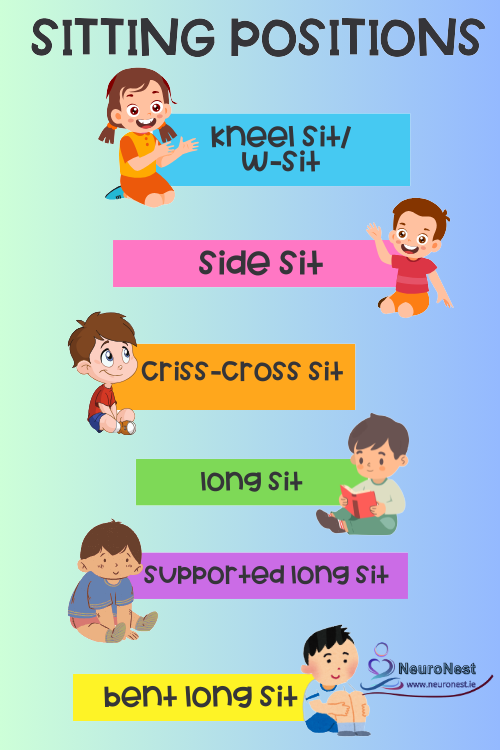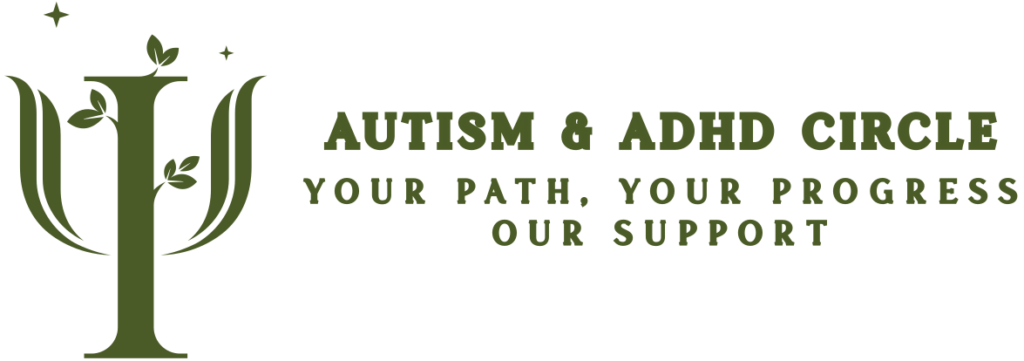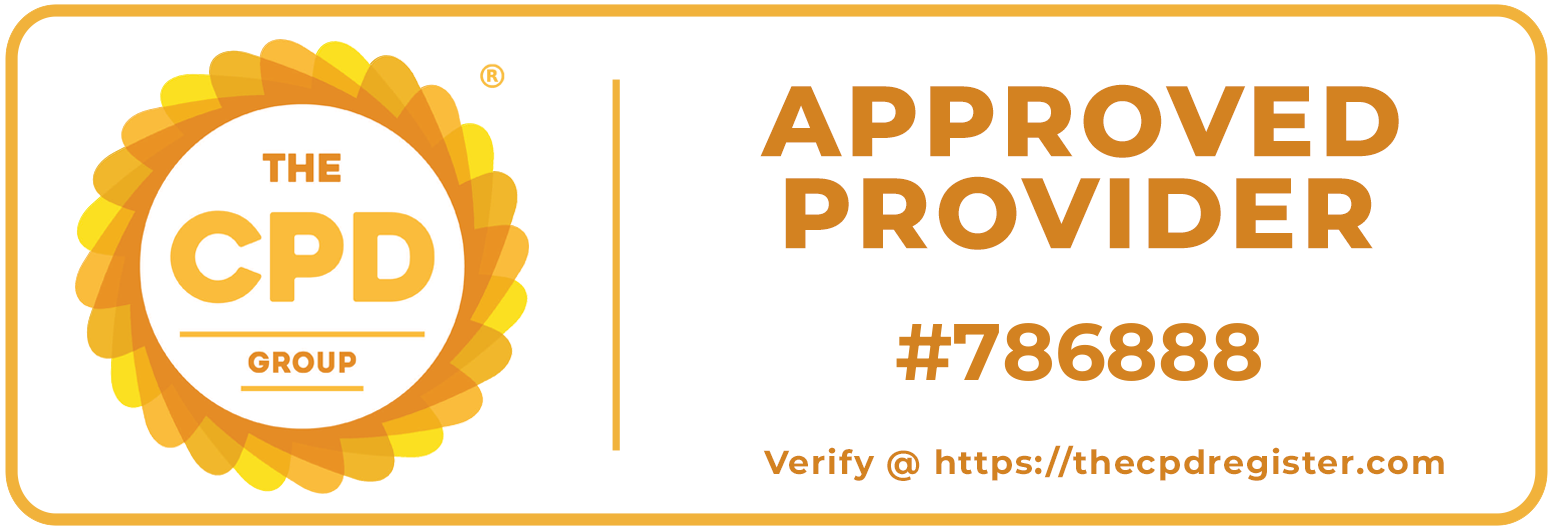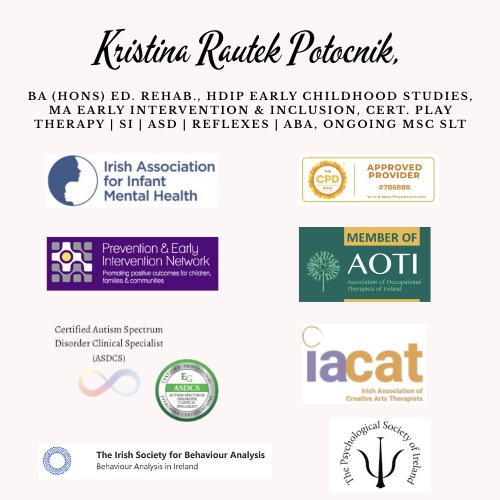Floor Sitting Positions

Author: Kristina Rautek Potocnik, BA (Hons) Ed. Rehab., HDip Early Childhood Studies, MA Early Intervention & Inclusion, Cert. Play Therapy | SI | ASD | Reflexes, ongoing MSc SLT
Children often sit on the floor throughout the day—during story time, play, gym, and classroom activities. It’s a natural part of their learning and routine. But have we ever truly stopped to think about whether “crisscross applesauce” is really the best—or only—way for every child to sit?
You might be surprised to learn that there are many ways to sit on the floor, and not every child finds the cross-legged position comfortable or even possible. Each child is unique, and how they sit can be influenced by their body awareness, muscle tone, balance, and comfort levels. For some children, sitting cross-legged works well. For others, it can be a struggle.
Let’s begin with the familiar position—“crisscross applesauce.” This style of sitting, with knees bent and legs crossed in front, is often taught early in school. It keeps the body compact and looks tidy, which is why many teachers prefer it for group activities. But for children who have trouble with core strength, flexibility, or attention, it can feel uncomfortable or even painful. They might fidget, lean over, or keep changing positions— not because they aren’t listening, but because their body needs something different.
Then there’s the W-sit. If you’ve seen a child sitting with their knees in front and feet out to the sides, that’s a W-sit. It feels stable to many children, especially those with lower muscle tone. While this position has raised concern among professionals, recent research shows it may not be harmful for all children. Still, sitting this way for long periods might not be ideal, so we usually encourage children to try other positions too, when possible.
Another common style is long-legged sitting, where legs are stretched out in front. This can be more comfortable for children with tight hips or back muscles. Sometimes, they’ll bend their knees or hug their legs. This takes up more space and can make it harder to stay upright, but for some, it’s the only comfortable way to sit on the floor.
Some children prefer to sit with their legs to one side, like in a mermaid pose. This position feels more natural for certain body types and provides a bit of side support. Others may choose to kneel on their feet, a position that feels grounding and gives some children the sensory input they need to stay focused. This is known as a short kneel. It’s especially helpful for children who need to feel more centered, although it can be hard on the knees or block the view of those behind.
The truth is, children are not all the same. We cannot expect every child to sit the same way for long periods. Some are still developing strength and balance. Some are more sensitive to how their body feels. Others need extra support just to stay upright and engaged. That’s why offering different sitting choices is not only fair—it’s essential.
There are many simple ways to help children find their best sitting position. You might use small rugs or floor mats to give them a defined space. Weighted lap pads or small cushions can help some children stay settled. For others, having the option to sit on a low chair or do a quiet activity nearby can make all the difference.
It also helps to keep circle time short—just ten minutes is enough for most young learners. Letting children know what to expect, step by step, can ease anxiety and help them stay focused.
In the end, our goal isn’t to have everyone sitting perfectly still. It’s to create a space where every child can feel comfortable, included, and ready to learn.
As parents, teachers, therapists, and early intervention specialists we can be advocates for flexible and inclusive seating. Let’s focus less on how children sit—and more on helping them engage, explore, and grow in a way that works for them.
Latest Posts
- How children make sense of the world through their senses
- How your baby learns about the world through their senses
- Helping your child grow stronger through movement and play
- Understanding How Early Intervention Helps Children Learn, Move, and Connect
- How to Recognise Tactile Defensiveness and Help Your Child Feel Safe
- Understanding Feeding Challenges and How to Support Your Child at Home
- Let’s Talk Sitting: Exploring Floor Seating Options
- Retained Primitive Reflexes: The Hidden Cause Behind Developmental Struggles
- Where Curiosity Blossoms: How Children's Play Nurtures Growth for All
- Helping Your Child Through Stress: A Gentle Guide for Parents
- Sweet Little Lies – How to Recognise and Respond with Care
- Chores Are More Than Just Tasks – They’re a Tool for Growing Independence, Focus, and Confidence
- How to Help Children Develop Emotional Intelligence
- Blending Technology and Care: How VR Meta Quest Supports Children at NeuroNest
- A simple guide for parents who want to raise confident, happy children
- Setting Boundaries with Love: A Simple 3-Step Guide for Parents
- Understanding Behavior Through the Nervous System
- A Compassionate Lens on Dysregulation in Non-Speaking Autistic Individuals
- Supporting Development Through Movement: The Role of the Swing in Early Intervention
- Blending Tradition and Innovation: How NeuroNest Supports Your Child’s Unique Journey
- When Movement Meets Innovation: Supporting Child Development with GoBalance
- Why Visual Perception Matters for Everyday Life and Development
- Benefits of Chess in Early Intervention
- Building Healthy Nutrition from the Start
- A Journey Back to Your True Self
- Supporting Your Child’s Hand Skills for Confident Writing
- Blending the Best of Both Worlds
- Helping Toddlers Eat Well: A Parent’s Guide
- Why Tummy Time Matters for Your Baby's Development
- Helping Your Child Build Everyday Independence
- Who Are the Disconnected Kids?
- From First Tries to Automatic Habits: Understanding the Stages of Skill Learning
- Why a Child’s Level of Alertness Matters for Memory and Learning
- Early brain development starts before birth
- Why Slowing Down, Adapting Tasks, and Adding Breaks Helps Children Learn Better
- Why ADHD, Autism, Dyslexia and Other Challenges Need a New Approach
- The surprising power of copying in child development
- Books are more than just language tools—they’re powerful allies in sensory and motor development.
- Rethinking sensory support: moving beyond expensive rooms toward everyday understanding.
- Understanding how fear develops in a child’s brain
- Understanding how an early baby reflex can affect your child’s daily life
- A gentle start into baby development through movement and bonding
- A child-centred, research-informed approach that uses the power of play to support communication, emotional regulation, motor development, and meaningful growth from infancy to twelve years.
Our Partners




Our Memberships


